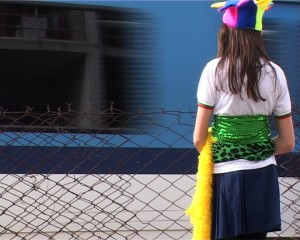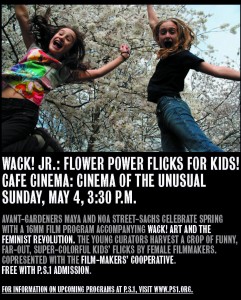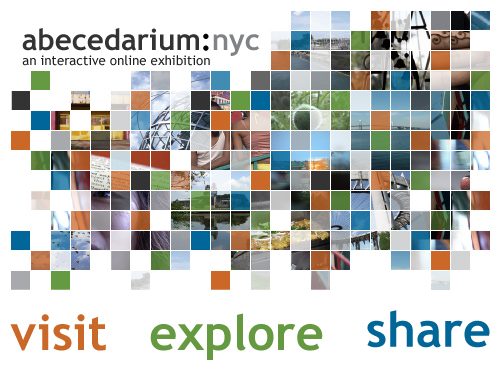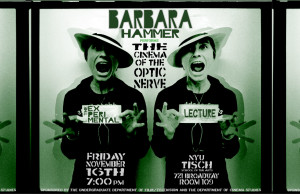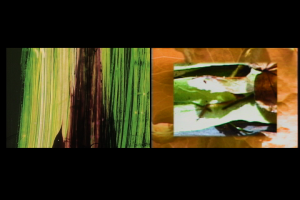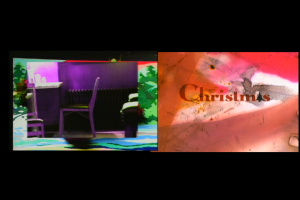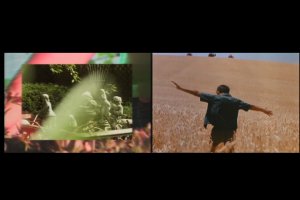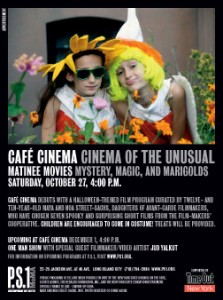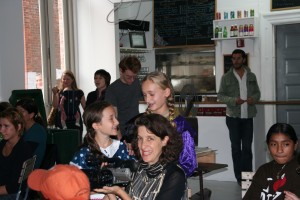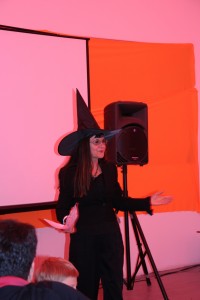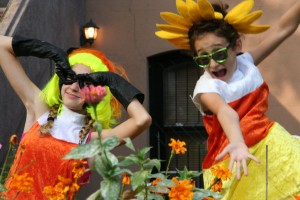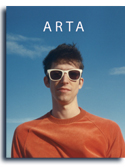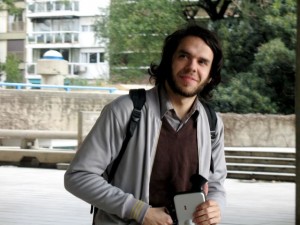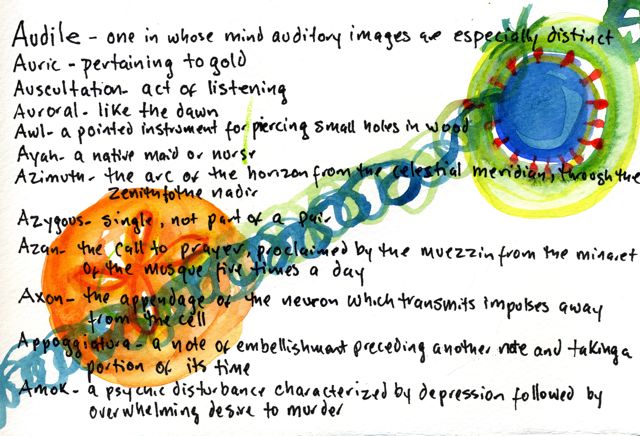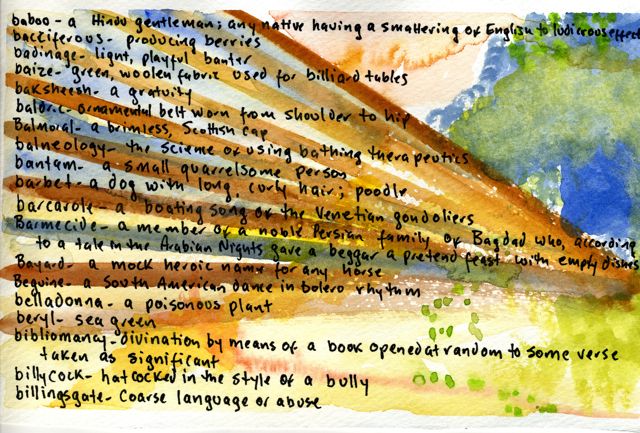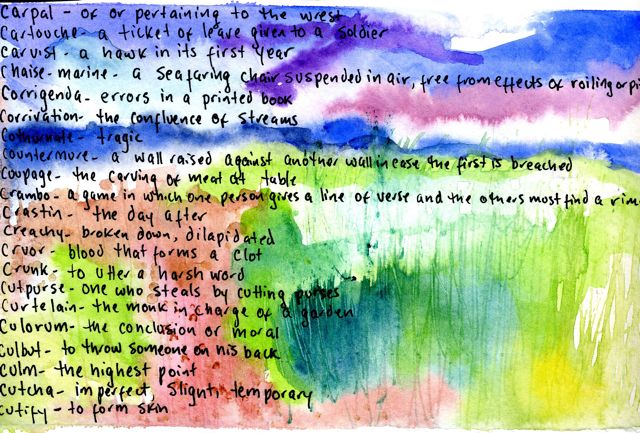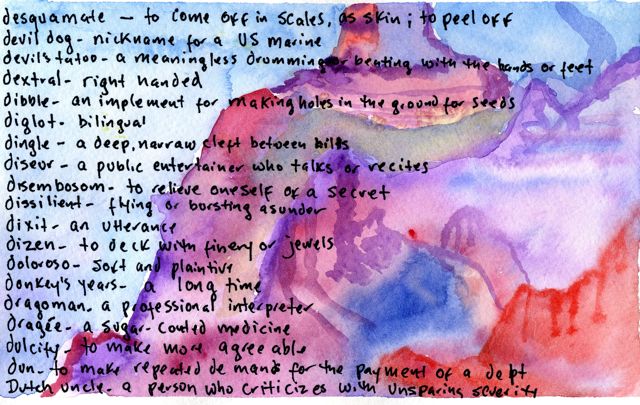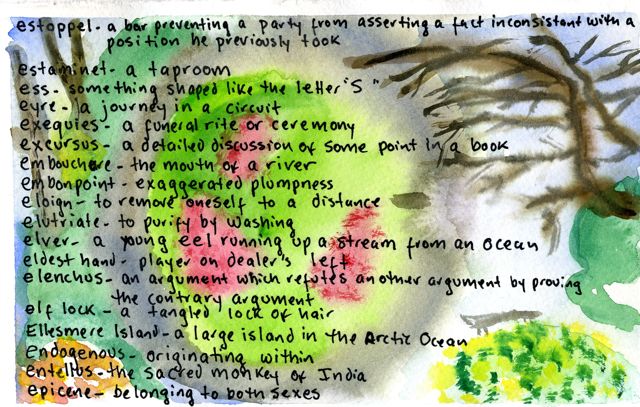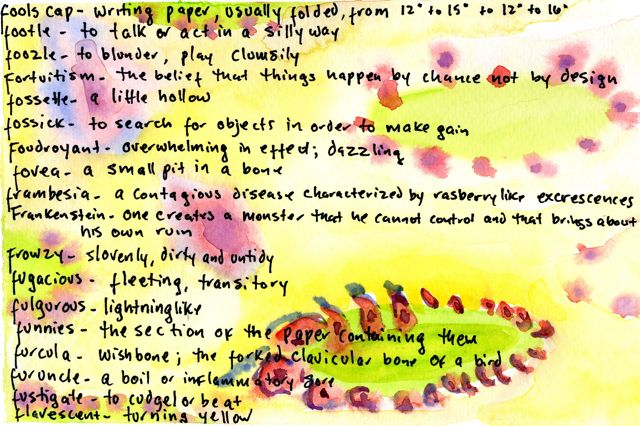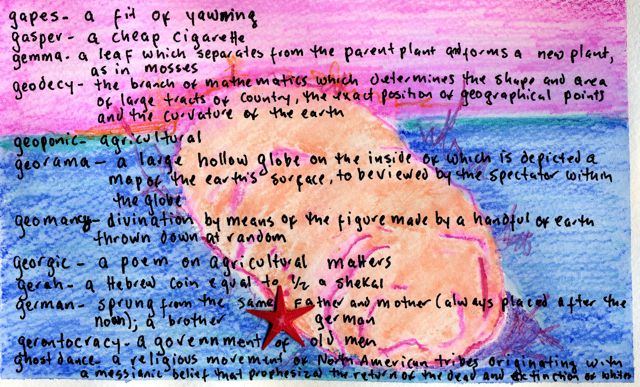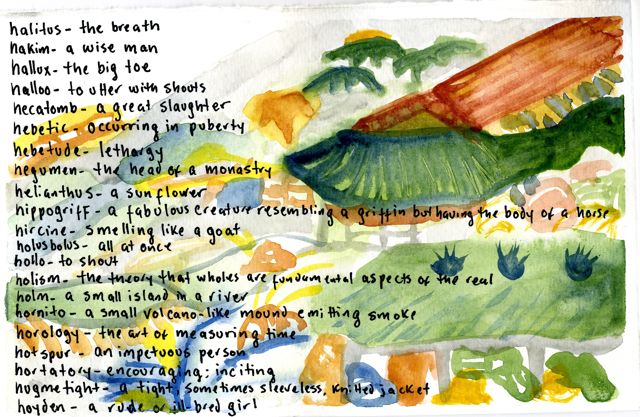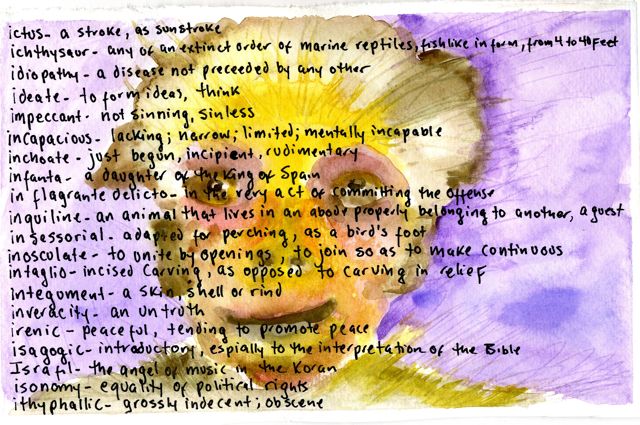NOTE: This film’s title is now WIND IN OUR HAIR/ CON VIENTO EN EL PELO
TRACKING LYNNE SACHS TOWARDS THE END OF THE GAME
(English translation of article published on September 6, 2008 in
Diario La Republica’ de Corrientes, Argentina)
By Melisa Mozzati
Cold August winter in Buenos Aires. Lynne Sachs and a reduced crew are ready to begin the last shooting day of her first fictional opus. She chooses a small grove next to the Mitre’s train tracks in Palermo’s Park.
The last scenes are filmed in two different formats. Lynne captures images in Super 8 mm meanwhile Tomás Dota, a young Argentinean filmmaker and part of the local group that collaborates in Sachs project does the same in HDV. At one side, the classic and purity of the film dominated by the hand of an artist that feels in her environment with it, at the other side, digital technology in front of the perspective of the new generation. This is experimental cinema. A mixture of format and textures. Different ways altogether in the crucial moment of telling the same story.
Lynne Sachs adventures in a unusual path. As a natural born documentary’s filmmaker, she decides to produce her fist fiction movie in our country. After being invited by the Buenos Aires International Independent Festival (Buenos Aires Festival de Cine Independiente – BAFICI) in 2007, she promised herself to come back this year for summer holidays with her family to try to unveil a hidden project that our land kept for her.
Last May, while she was reading Julio Cortázar short story “Final de Juego” she realized that this would be her fist attempt in fiction. Later in Argentina, her next step was to find the actors and a dear friend of her, Paula Felix Didier, the world wide well known Director of the National Museum of Cinema “Pablo D. Hicken” who recently discovered the Fritz Lang original final cut of “Metropolis”, had the solution. She introduced Lynne to the children who would complete the cast: the sisters Lena and Chiara Peroni and Lautaro Cura. Maya and Noa Street, Lynne´s daughters, were part of the project from the very beginning. Now with enougt teenagers, Sachs could finally say: ACTION! Bettina Nanclares, mother of Lena and Chiara, as well as Felix Didier also took part in the film in the roles of the mother of the girls and Aunt Ruth, respectively.
But Lynne Sachs always escapes from conventionalisms. She added a diversity of looks and textures into this story full of deep emotions that go off like a train running at maximum velocity. For this reason, she used different formats. To her Bolex 16 mm, she added Pablo Marin’s and Leandro Listorti’s Super 8 and Tomás Dota’s digital video all of whome divided the shooting work into several locations. Starting at a house in Martinez that reminds us a 70s manor where the action starts rolling. This was Leandro Listorti´s first task. Then came scenes in Plaza Francia, National Library (Biblioteca Nacional) and Recoleta Cemetery (Cementerio de Recoleta).
Maybe the most complicated obstacle was to film in Mitre’s train station because the train passing, Ariel’s departure and the exact moment when the girls were doing the “postures” had to be precisely coordinated. However, everything was fulfilled with success and after a exhausting day everybody came back home with a smile of satisfaction in their face.
The day before the last was classic, one of those that must be in every experimental film shoot. When Lynne and Pablo Marin were just about to start filming in Retiro´s train station the police came out and they announced that they were not allowed to capture any image there. Very disappointed, they left the place and after only a few minutes walking they discovered a magical place – a garden full of sculpted animals by the Argentinean artist, Carlos Regazzoni. This nightmarish place was the perfect spot to register the proposed scenes.
Finally, we arrive at the cold August winter Sunday of the beginning of these chronicals and the actual end of the production. At this point, the narrator’s nightmare is on set. With the collaboration of psychologist and photographer, Inés Oyerbide, a necessary level of comprehension and appreciation of the several layers of meanings that lay beneath the oeniric moment of the story’s telling was reached.
As good filmmakers, Lynne Sachs doesn’t over explain the story’s closure. She lets us decide what is hidden behind every photogram. She does not overwhelm us with information avoiding our brain to get sleepy in a slow, placid carrousel of images. On the contrary. She invites us to this interesting trip in which anyone can infer what really is in this multi-textured chain that surrounds this magnificent Cortázar short story with so many comprehension levels.
Those who accept the invitation to this playful instant of cinema are welcome. Let’s reach to the end of the game as we like.
BREVIARY
Born and raised in Memphis, Tennessee, Lynne Sachs constantly tries to expose verbal language limitation seeing it as a complex visual and emotional imagery.
Always working in experimental area of cinema, she has dived in a great variety of themes such as genre limitations, radical identities, psico-emotional states, American idiosyncrasy and war conflicts.
Documentary genre is her natural environment but she decided to get into the world of fiction by the hand of one of the most fantastic fictional literature writers. Julio Cortázar´s stories are full of secret games and his work not only awakes a profound interest in readers but also is a connexion with the inner child that lives in ourselves.
Lynne Sachs was not the exception and she also wanted to have fun so she chose Cortázar´s “Final del Juego” (End of the Game) as the plot for her first fiction film, and Buenos Aires, Argentina as the perfect playground.
Filmography
With Sermons and Sacred Pictures (1989).
The House of Science: a museum of false facts (1991)
Which Way is East (1994)
A Biography of Lilith (1997)
Investigation on a Flame (2001)
The House of Drafts (2002)
States of UnBelonging (2004)
Final del Juego (in production)
By Melisa Mozzati – melisamozzati@hotmail.com – Corrientes, Argentina
SIGUIENDO A LYNNE SACHS HASTA EL FINAL DEL JUEGO
Melissa Mozatti
Diario La Republica’ de Corrientes, Argentina
6 Septiembre, 2008
Frío domingo de Agosto en Buenos Aires. Lynne Sachs y un reducido grupo de colaboradores se dispone a comenzar la última jornada de rodaje de su primera obra de ficción y elige una pequeña arboleda pegada a las vías del tren Mitre en los parques de Palermo.
Las últimas escenas se filman en dos formatos diferentes. Lynne capta las imágenes en Super 8 mientras que Tomás Dota, un realizador argentino y parte del grupo de jóvenes cineastas locales que colaboraron en este proyecto, registra en Alta Definición Digital. Lo clásico del fílmico de la mano de una artista que se siente cómoda en ese formato, por un lado, y la tecnología digital delante de la mirada de la nueva generación, por el otro. El cine experimental se basa en esto. En la mixtura de formatos y texturas, en las distintas formas de ver conjugadas al momento de contar una misma historia.
Lynne Sachs se aventura en un camino distinto. Documentalista por naturaleza, decide realizar su primera producción de ficción en nuestro país. Luego de haber sido convocada por el Buenos Aires Festival de Cine Independiente en su edición del 2007, se prometió volver en este año en unas prolongadas vacaciones junto a su familia para tratar de develar que proyectos le esperaban dormidos en nuestras latitudes.
Lo supo a mediados del mes de mayo mientras organizaba su estadía de varios meses en Argentina. Terminó de leer el cuento de Julio Cortázar, “Final de Juego” y decidió que ese sería su primer film de ficción.
Ya en Argentina, el problema era conseguir actores que llevaran adelante la historia y para tal empresa contó con la ayuda de una querida amiga, nada menos que la hoy muy reconocida por su descubrimiento del metraje original de la famosa “Metrópolis” de Fritz Lang que se suponía perdida para siempre, Paula Felix Didier, directora del Museo Nacional de Cine “Pablo D. Hicken”, que presentó a quienes completarían el reparto del film, las hermanas Lena y Chiara Peroni y Lautaro Cura. Noa y Maya Street, hijas de Lynne, eran parte del proyecto desde un inicio y, uniéndose al resto de los adolescentes, comenzó el rodaje.
La madre de las actrices argentinas, Bettina Nanclares, y hasta la propia Felix Didier también colaboraron en los papeles de la madre de las niñas y de la tia Ruth, respectivamente.
Pero Lynne Sachs escapa siempre a los convencionalismos y a esta historia de emociones profundas que se disparan a la velocidad de un tren agregó diversas miradas y texturas para lo cual eligió mezclar diferentes formatos. Ella, siempre captando las imágenes con su Bolex 16 mm, sumó la Super 8 de Pablo Marin y Leandro Listorti y el video digital de Tomás Dota quienes a su vez se dividieron la tarea de tirar toma en diversas locaciones. Empezando por una casa en Martinez que remite la idea de caserón de los 70s donde inicia la acción en el relato, Leandro Listorti fue el encargado de rodar las primeras escenas. Siguieron las tomas en Plaza Francia, la Biblioteca Nacional y el Cementerio de Recoleta.
Quizás lo más complicado haya sido filmar en la estación de tren Mitre ya que había que coordinar el paso del tren, la salida de Ariel (Lautaro) y el momento en que las chicas hacían las estatuas. Sin embargo, todo salió como debía y luego de un exhaustivo día volvieron todos contentos a casa.
La penúltima jornada fue de antología y de aquellas que deben estar presentes en los rodajes de cine experimental. Cuando Lynne y Pablo Marin se disponían a filmar en la estación de tren de Retiro varios policías se acercaron a impedirlo y decepcionados tuvieron que abandonar el predio aunque minutos después lo agradecieron ya que se toparon con el grotesco jardín de esculturas que se encuentra detrás de Retiro, lleno de animales esculpidos construidos por el artista plástico Carlos Regazzoni. Este lugar pesadillesco fue ideal para registrar las escenas propuestas.
Para finalizar, llegamos al frio domingo de agosto del inicio de esta crónica y del final de la realización. El último día de producción es la continuación de la pesadilla del narrador. Con la colaboración de Inés Oyarbide, psicoanalista de profesión y fotógrafa por vocación, se logró el nivel necesario de comprensión y apreciación de las distintas capas de significado que subyacen en el momento onírico del film.
Como los buenos cineastas Lynne Sachs no nos sobreexplica el relato ni su cierre. Nos deja decidir qué hay detrás de cada fotograma. No nos atosiga de información para que nuestro cerebro se adormezca tranquilamente en el transitar de las imágenes. Todo lo contrario. Nos invita a pasear y a que cada uno conjeturemos a voluntad que se esconde en el encadenado de las diversas texturas que envuelven un magnifico relato de Cortázar con tantos niveles de comprensión como uno desee hallar.
Quienes acepten la invitación a este momento lúdico del cine sean bienvenidos y que cada uno llegue al final del juego de la forma en que guste.
BREVIARIO
Nacida y criada en Memphis, Tennesse, Lynne Sachs intenta constantemente exponer las limitaciones del lenguaje verbal complementándolo con una compleja imaginería visual y emocional.
Siempre trabajando en el área experimental de la cinematografía ha tratado una gran diversidad de temáticas que van desde las limitaciones de géneros, las identidades radicalizadas, los estados psico-emocionales, la idiosincrasia norteamericana y los conflictos bélicos.
El género documental es el medio en donde mejor se siente pero ha decidido ingresar al mundo fantástico y de la mano (o de la pluma si se quiere) de uno de los mejores escritores de literatura de ficción, Julio Cortázar, quien incluye en sus relatos un cariz lúdico que despierta en los lectores no solo el interés obvio en una obra inteligente sino un punto de contacto con el niño interior que no descansa de los juegos.
Lynne Sachs no fue la excepción y también quiso salir a jugar, por eso eligió “Final del Juego” de Cortázar como argumento para su primer film de ficción y Buenos Aires, Argentina, como locación para el mismo.
Filmografia
With Sermons and Sacred Pictures (1989).
The House of Science: a museum of false facts (1991)
Which Way is East (1994)
A Biography of Lilith (1997)
Investigation on a Flame (2001)
The House of Drafts (2002)
States of UnBelonging (2004)
Final del Juego (en producción)

